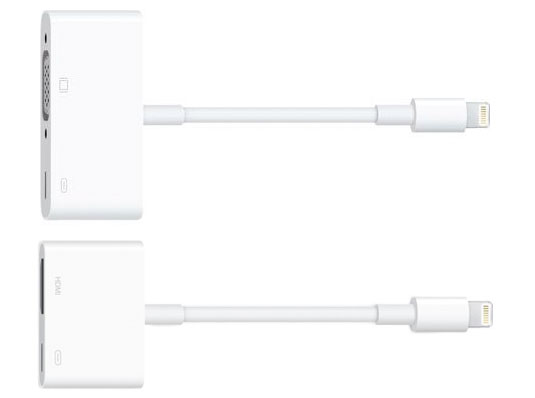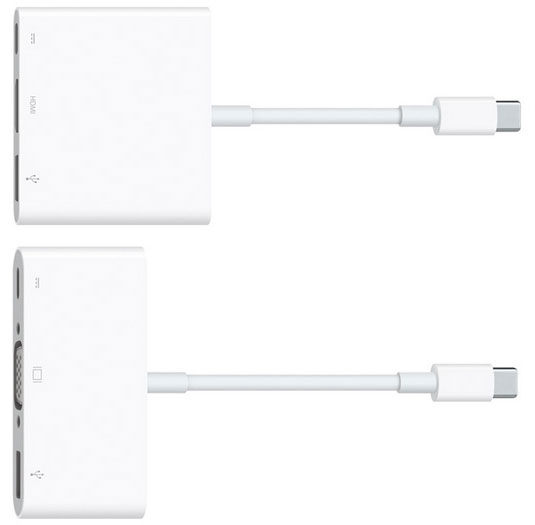Hosted by site sponsor WebMate.
iPad Pro Q&A
Update Published October 31, 2025
All Apple Q&As >> iPad Pro Q&A (Home) | Also see: All iPad Specs
To be notified of new Q&As, sign up for EveryMac.com's bimonthly email list.
What are the differences between the displays on each iPad Pro? Which is best?
Although all iPad Pro displays are 264 ppi, there otherwise are significant differences in size and quality between lines. Just about each series improves on the last.
The iPad Pro display differences can be summarized accordingly:
iPad Pro |
Size |
Resolution |
True Tone |
ProMotion |
Orig. iPad Pro 12.9" |
12.9" |
2732x2048 |
No |
No |
Orig. iPad Pro 9.7" |
9.7" |
2048x1536 |
Yes |
No |
iPad Pro 2 10.5" |
10.5" |
2224x1668 |
Yes |
Yes |
iPad Pro 2 12.9" |
12.9" |
2732x2048 |
Yes |
Yes |
iPad Pro 11" |
11.0" |
2388x1668 |
Yes |
Yes |
iPad Pro 3 12.9" |
12.9" |
2732x2048 |
Yes |
Yes |
iPad Pro 2 11" |
11.0" |
2388x1668 |
Yes |
Yes |
iPad Pro 4 12.9" |
12.9" |
2732x2048 |
Yes |
Yes |
iPad Pro 3 11" |
11.0" |
2388x1668 |
Yes |
Yes |
iPad Pro 5 12.9" |
12.9" |
2732x2048* |
Yes |
Yes |
iPad Pro 4 11" |
11.0" |
2388x1668 |
Yes |
Yes |
iPad Pro 6 12.9" |
12.9" |
2732x2048* |
Yes |
Yes |
iPad Pro M4 11" |
11.0" |
2420x1668† |
Yes |
Yes |
iPad Pro M4 13" |
13.0" |
2752x2064† |
Yes |
Yes |
iPad Pro M5 11" |
11.0" |
2420x1668† |
Yes |
Yes |
iPad Pro M5 13" |
13.0" |
2752x2064† |
Yes |
Yes |
True Tone evaluates the color temperature and ambient brightness of the surroundings and dynamically adjusts the display's white balance to match. ProMotion provides an adaptive refresh rate up to 120 Hz to reduce the latency of the Apple Pencil and make animation smoother.
* The iPad Pro 12.9" (5th Gen) models -- the iPad Pro 12.9" (6th Gen) uses the same display -- provide a significant leap forward in display technology. They are the same resolution as earlier models but use new "Liquid Retina XDR" technology with a 2D backlighting system and 1,000,000:1 contrast ratio.
† The iPad Pro M4 and iPad Pro M5 models have even better displays, dubbed "Ultra Retina XDR" with "Tandem OLED" backlighting that uses two OLED panels and combines the light from both for increased brightness. These displays provide an SDR brightness of 1000 nits max, XDR brightness of 1000 nits max full screen and 1600 nits peak brightness for HDR content; and have a 2,000,000:1 contrast ratio.
How do you connect an iPad Pro to a television or projector to display photos or video? What formats and resolutions does it support? What are the video out differences between iPad Pro models?
You can connect original iPad Pro and iPad Pro (2nd Gen) models to a television or projector to display photos or videos using the Lightning to VGA Adapter (MD825AM/A) or the Lightning to Digital AV Adapter (MD826AM/A).

Photo Credit: Apple, Inc. (Lightning to VGA & Lightning to Digital AV Adapters)
The iPad Pro 11" (Original and 2nd Gen) and iPad Pro 12.9" (3rd Gen and 4th Gen) models are equipped with a USB-C port instead of a Lightning port. The iPad Pro 11" (3rd Gen) and iPad Pro 12.9" (5th Gen) and all later models, including the current iPad Pro M4 series, have a Thunderbolt / USB 4 port with a USB-C shaped connector.
Accordingly, these models can be connected to a display, television, or projector with the Apple USB-C VGA Multiport Adapter (MJ1L2AM/A) or the Apple USB-C Digital AV Multiport Adapter (MJ1K2AM/A).

Photo Credit: Apple, Inc. (Apple USB-C Adapters)
For a projector or television with a vintage VGA port, you will need to use the Lightning to VGA Adapter or USB-C VGA Multiport Adapter. For one with a more modern HDMI port, you will need to use the Lightning to Digital AV Adapter or USB-C Digital AV Multiport Adapter.
All iPad Pro tablets except for the original iPad Pro 12.9" models also can be connected to a television indirectly by using AirPlay Mirroring and an Apple TV 2nd Gen or later.
All iPad Pro models support a maximum video out resolution of 1080p or 4K to a television. Specifically, the iPad Pro models support these video standards:
- H.264 video up to 1080p, 60 frames per second [up to 4K, 30 frames per second for the iPad Pro 3rd Gen and later], High Profile level 4.2 with AAC-LC audio up to 160 Kbps, 48kHz, stereo audio [or Dolby Audio up to 1008 Kbps for the iPad Pro 3rd Gen and later] in .m4v, .mp4, and .mov file formats.
- MPEG-4 video up to 2.5 Mbps, 640 by 480 pixels, 30 frames per second, Simple Profile with AAC-LC audio up to 160 Kbps per channel, 48kHz, stereo audio [or Dolby Audio up to 1008 Kbps for the iPad Pro 3rd Gen and later] in .m4v, .mp4, and .mov file formats.
- Motion JPEG (M-JPEG) up to 35 Mbps, 1280 by 720 pixels, 30 frames per second, audio in ulaw, PCM stereo audio in .avi file format.
The iPad Pro models also support photos and image files in JPEG, BMP, GIF, TIFF, PSD (Mac only), and PNG formats.
Which iPad Pro models support an external display? What is the maximum supported resolution?
Although earlier iPad Pro models can be connected to an external display and the contents of the iPad screen can be mirrored, the iPad Pro 11" (Original) and later and iPad Pro 12.9" (3rd Gen) and later models support a true second display. Accordingly, these iPad Pro models can be connected to an external display via USB-C and the display can be used as a second workspace for the iPad Pro.
For the iPad Pro 11" (Original & 2nd Gen) and iPad Pro 12.9" (3rd Gen & 4th Gen), the external display can be as large as 4K (4096x2106), whereas the iPad Pro 11" (3rd Gen) and later and iPad Pro 12.9" (5th Gen) and later can drive an external display as large as 6K (6016x3384).
Which iPad Pro models support Sidecar?
All iPad Pro models support Apple's Sidecar software feature. In conjunction with a Mac running macOS Catalina (10.15) or later, Sidecar allows an iPad Pro running iPadOS (iOS 13) or later to be used as a second display for the Mac.
If you have a Mac running an earlier version of the macOS and would like to use your iPad Pro as a second display, you instead can use one of the third-party apps that invented this capability. Apple only later copied these apps and integrated their functionality into the iOS and macOS.
What are the main differences between the cameras on each iPad Pro? How many megapixels is each?
All iPad Pro models have both front and rear cameras. Because of their relatively large size, you might think that the iPad Pro would not be popular to use as a camera.
However, starting with the 9.7" iPad Pro -- which was fairly inexpensive for a 4K camera at the time -- and because the devices themselves are powerful enough to do quite a bit of photo and video editing, they have become popular for professional photography and videography when combined with tripods and mounts.
The camera capability of each iPad Pro follows. Perhaps the most noticeable jump in quality was between the original 12.9" iPad Pro and its immediate predecessor, though:
iPad Pro |
Front Camera |
Rear Camera |
Orig. iPad Pro 12.9" |
1.2 MP (720p) |
8 MP (1080p) |
Orig. iPad Pro 9.7" |
5 MP (720p) |
12 MP (4K) |
iPad Pro 2 10.5" |
7 MP (1080p) |
12 MP (4K) |
iPad Pro 2 12.9" |
7 MP (1080p) |
12 MP (4K) |
iPad Pro 11" |
7 MP (1080p) |
12 MP (4K) |
iPad Pro 3 12.9" |
7 MP (1080p) |
12 MP (4K) |
iPad Pro 2 11" |
7 MP (1080p) |
12 MP Wide (4K) |
iPad Pro 4 12.9" |
7 MP (1080p) |
12 MP Wide (4K) |
iPad Pro 3 11" |
12 MP (1080p) |
12 MP Wide (4K) |
iPad Pro 5 12.9" |
12 MP (1080p) |
12 MP Wide (4K) |
iPad Pro 4 11" |
12 MP (1080p) |
12 MP Wide (4K) |
iPad Pro 6 12.9" |
12 MP (1080p) |
12 MP Wide (4K) |
iPad Pro M4 11" |
12 MP (1080p) |
12 MP Wide (4K)
|
iPad Pro M4 13" |
12 MP (1080p) |
12 MP Wide (4K) |
iPad Pro M5 11" |
12 MP (1080p) |
12 MP Wide (4K)
|
iPad Pro M5 13" |
12 MP (1080p) |
12 MP Wide (4K) |
If you are not sure which iPad Pro you have, a relatively straightforward way to identify each is by its Model Number.
Permalink | Report an Error/Typo | Sign Up for Site Update Notices
<< iPad Pro Q&A (Main) | All Apple Q&As
Established in 1996, EveryMac.com has been created by experts with decades of experience with Apple hardware. EveryMac.com includes, and always has included, original research incorporating detailed, hands-on inspection of packaging, computers, and devices as well as extensive real-world use. All information is provided in good faith, but no website or person is perfect. Accordingly, EveryMac.com is provided "as is" without warranty of any kind whatsoever. EveryMac.com, and the authors thereof, shall not be held responsible or liable, under any circumstances, for any damages resulting from the use or inability to use the information within. For complete disclaimer and copyright information please read and understand the Terms of Use and the Privacy Policy before using EveryMac.com. Copying, scraping, or use of any content without expressed permission is not allowed, although links to any page are welcomed and appreciated.
